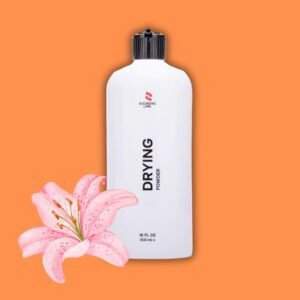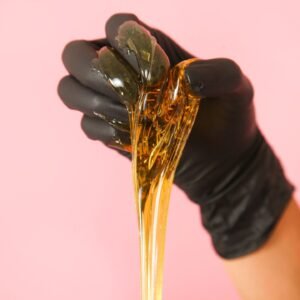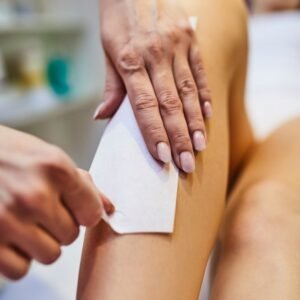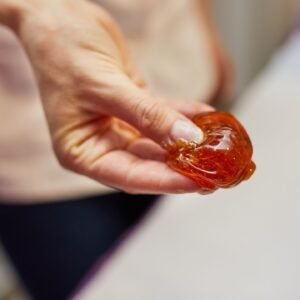What is Sugar Paste? A Guide to Natural Hair Removal

Sugaring is an ancient method of hair removal that has gained popularity in recent years due to its natural ingredients and effectiveness. At the heart of this technique is sugar paste, a sticky substance made primarily from sugar, water, and lemon juice. But what is sugar paste and how does it compare to traditional waxing? In this article, we will explore the properties of sugaring paste, its different consistencies, and its advantages over wax.
Table of Contents
- Key Features and Benefits of Sugar Paste
- Understanding the Various Types of Sugaring Paste Consistencies
- Differences and Advantages Compared to Wax
- The Benefits of Sugar Paste: A Gentle and Effective Hair Removal Solution
- Frequently Asked Questions
- What areas of the body can sugaring paste be used on?
- Is sugaring less painful than waxing?
- Can sugaring paste be used on sensitive skin?
- How long do the results of sugaring last?
- How do you clean up sugaring paste after use?
- Can sugaring prevent ingrown hairs?
Key Features and Benefits of Sugar Paste
At its core, sugaring paste is a natural, hypoallergenic compound that is gentle on the skin. The primary ingredients – sugar, water and lemon juice – create a paste that adheres to the hair rather than the skin, making the hair removal process less painful. The sugar acts as a natural exfoliant, helping to remove dead skin cells along with unwanted hair.
Another important feature of sugaring paste is its temperature sensitivity. Unlike wax, which is often heated to a high temperature, sugaring paste can be used at room temperature or slightly warmed. This characteristic reduces the risk of burns and irritation, making it suitable for sensitive skin.
Understanding the Various Types of Sugar Paste Consistencies
What is sugar paste? It comes in different consistencies to suit different hair removal techniques and individual preferences. The four main types of sugaring paste are
Soft paste: This consistency is ideal for areas with fine hair, such as the upper lip or eyebrows. It is often used for professional applications where the technician can easily manipulate it.
Medium paste: A versatile option, medium sugaring paste can be used on both fine and coarse hair. It is suitable for most areas of the body, including the arms and legs.
Medium-Soft paste: This type offers a balance between soft and medium pastes, making it especially effective for sensitive areas. It is easier to work with than hard pastes while still providing good grip on the hair, making it a popular choice for many professionals.
Firm Paste: This thicker consistency is designed for coarser hair and larger body areas such as the back or legs. It requires more technique and may be more suitable for experienced practitioners.
Understanding these different consistencies can help you choose the right product for your needs.
Differences and Advantages Compared to Wax
There are several key differences and advantages when comparing sugaring paste to traditional waxing:
| Feature | Sugar paste | Wax |
| Temperature | Room temperature | Heated |
| Ingredients | Natural (sugar, lemon, water) | Chemical-based |
| Adherence | Adheres to hair, not skin | Adheres to both hair and skin |
| Pain Level | Generally less painful | Can be more painful |
| Cleanup | Easily rinsed with water | Requires oil for removal |
Less painful: Because sugaring paste adheres only to the hair, it causes less trauma to the skin, resulting in a more comfortable experience. This feature makes it an attractive option for those who are sensitive to pain.
Natural ingredients: What is sugar paste made of? Its all-natural composition means less chance of allergic reactions or skin irritation, making it safe for all skin types.
Environmentally Friendly: Sugar paste is biodegradable and can be easily cleaned with water, unlike wax, which often contains synthetic materials.
Longer-lasting results: Many users report longer intervals between hair removal sessions with sugaring paste compared to wax because it can remove hair from the root more effectively.
Exfoliating benefits: The natural exfoliating properties of sugar help prevent ingrown hairs and leave skin smooth and soft.
The Benefits of Sugar Paste: A Gentle and Effective Hair Removal Solution
In summary, sugar ingpaste is a gentle, effective hair removal solution that offers numerous advantages over traditional waxing methods. With its natural ingredients, varying consistencies, and ability to provide a less painful experience, sugar paste is an excellent choice for anyone looking for an alternative hair removal method.
Whether you’re a beginner or experienced in hair removal techniques, understanding the properties and benefits of sugar paste can help you make an informed decision that suits your needs.
Frequently Asked Questions
What areas of the body can sugar paste be used on?
Sugar paste can be used on most areas of the body, including the face, arms, legs, bikini area, and even more sensitive areas like the upper lip or eyebrows. Different consistencies of paste are used depending on the hair type and area.
Is sugaring less painful than waxing?
Yes, sugaring is generally less painful than waxing because the paste adheres only to the hair, not the skin, which causes less irritation and discomfort during removal.
Can sugar paste be used on sensitive skin?
Yes, sugar paste is hypoallergenic and made from natural ingredients like sugar, water, and lemon juice, making it ideal for people with sensitive skin or those prone to allergic reactions.
How long do the results of sugaring last?
Results from sugaring typically last around 3 to 4 weeks, depending on your hair growth cycle. Since sugar paste removes hair from the root, the regrowth is often slower compared to other methods.
How do you clean up sugar paste after use?
Sugar paste is water-soluble and can be easily rinsed off with warm water. Unlike waxing, which often requires oils for cleanup, sugaring leaves no sticky residue on the skin.
Can sugaring prevent ingrown hairs?
Yes, sugaring can help prevent ingrown hairs because it naturally exfoliates the skin, removing dead skin cells that can clog pores and cause ingrown hairs.










